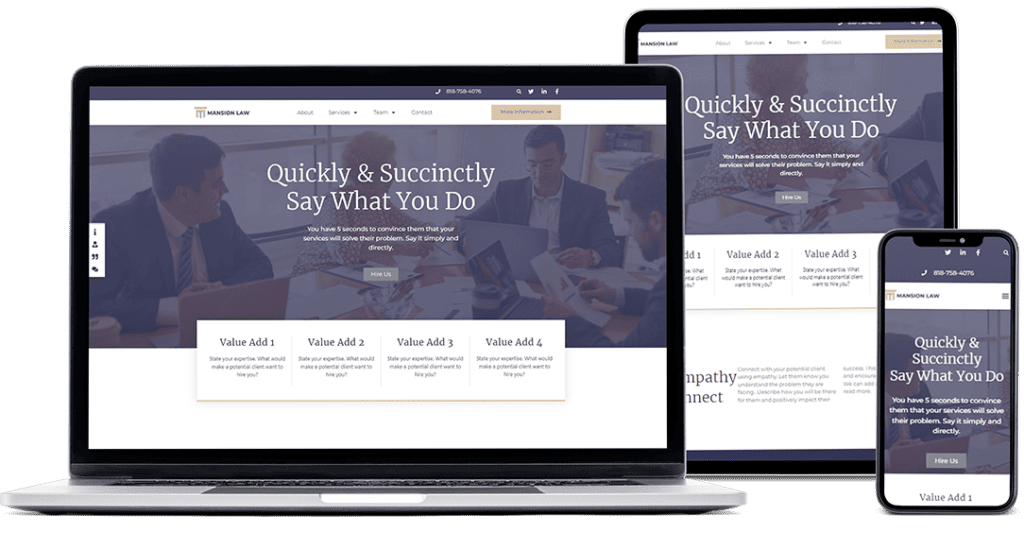How a Website Redesign Can Improve Your SEO
Search Engine Optimization (SEO) plays a vital role in helping your small business get noticed online. It’s the primary way potential customers find your website when searching for products or services you offer. But here’s the thing: even with great content and strong keywords, your website’s design and functionality could be silently undermining your SEO efforts.
A website redesign can address these issues by improving performance, usability, and overall SEO. It’s not just about how your site looks—what truly matters is the quality of your content and how well it engages your audience. Simple, user-friendly designs paired with optimized, high-quality content focused on your users’ needs consistently perform better than overly elaborate websites with little depth. In this blog, we’ll explore how a website redesign can enhance your SEO and help your business grow.
Why SEO Matters for Small Businesses
SEO is critical to getting your business noticed. Without it, even the most visually appealing website can remain unnoticed
- Visibility: SEO helps your site appear in search results, connecting you with potential customers.
- Statistics: Over 68% of online experiences begin with a search engine.
- Impact: Websites optimized for SEO see more traffic, longer engagement, and higher conversion rates.
Unfortunately, an outdated or poorly designed website can negate these benefits, making a redesign essential.
Signs Your Website’s Design May Be Hurting Your SEO
Here are some warning signs that your current website could be holding you back:
- Slow loading speeds caused by large images or outdated code.
- Non-responsive designs that alienate mobile users.
- Confusing navigation that leads to high bounce rates.
- Text embedded in images, which search engines can’t recognize, leading them to assume your page has no content.
- Poorly executed pop-ups that annoy users or slow down your site.
If your website displays any of these issues, a redesign could be the solution.
The Role of a Website Redesign in Improving SEO
Improved User Experience (UX)
Search engines prioritize user-friendly websites, and a redesign can improve how visitors interact with your site.
- Streamlined navigation: Keep menus simple, grouping links into subsections if you have many pages. Aim for no more than five links in your main menu to match users’ short-term memory capacity.
- Traditional placements: Header menus and footers should remain in standard locations to meet user expectations.
- Intuitive calls-to-action (CTAs):
- Good Example: “Contact Us for a Free Consultation.”
- Bad Example: “Click Here.”
Clear navigation and CTAs keep users engaged, lowering bounce rates and improving SEO.
Content Optimization Opportunities
Content is the heart of SEO, but it’s more than just sprinkling keywords into your pages. Effective content should focus on your users’ needs, solving their problems, and building trust through storytelling. A website redesign provides the perfect opportunity to realign your content strategy to achieve these goals. In addition to these important aspects, you must also:
- Rewrite old pages with relevant keywords and improved formatting.
- Avoid embedding text in images—always overlay text on top of an image for readability and SEO recognition.
- Add alt text to images for accessibility and ranking benefits.
By focusing on quality and compelling content during a redesign, you can align your site with search engines’ priorities and address the user’s needs.
Mobile-First Design
With most web traffic coming from mobile devices, Google’s mobile-first indexing ensures that responsive design is essential.
- Make sure your website adjusts seamlessly to all major screen sizes.
- Design touch-friendly menus and buttons for intuitive navigation.
- Streamline your content to load quickly on mobile devices.
Enhancing Site Speed
Site speed is crucial for rankings, and large images are often the culprit behind slow load times.
- Use tools to compress images and reduce file sizes without sacrificing quality.
- Optimize your website’s code for better performance.
- Implement caching to load frequently accessed content more quickly.
Reducing load times not only improves rankings but also keeps users engaged.
SEO-Friendly Coding
The platform you use for your website has a significant impact on SEO.
- WordPress is ideal for SEO-friendly coding, offering flexibility and clean URLs.
- Builders like Squarespace and Weebly use proprietary code that can slow down your site and hinder crawlability.
Choose WordPress during your redesign to ensure your site is built for growth and long-term SEO success.
Pop-Ups: Use Them The Right Way
Pop-ups can hurt your rankings if they disrupt user experience, but when done correctly, they’re not penalized by Google.
- Best Practices:
- Don’t show pop-ups immediately upon landing.
- Keep ads minimal in size and easy to close.
- Avoid auto-playing audio or video content.
Properly implemented pop-ups enhance your website’s usability without irritating visitors.
Common Mistakes to Avoid in a Redesign
Prioritizing Design Over Content
A visually striking design without meaningful content will fail to engage users or rank well.
- Focus on clear, concise messaging that resonates with your audience.
- Avoid embedding critical text in images, as search engines won’t recognize it.
- Use a content-first approach to prioritize substance over style.
Failing to Preserve SEO Strategies When Launching Your Redesign
A website redesign can transform your site, but it also comes with risks if your existing SEO strategies aren’t preserved. Without careful planning, you could lose rankings and traffic. Here’s how to avoid common pitfalls and maintain your hard-earned SEO during a redesign.
- SEO Audit of Your Current SEO
Identify your top-performing pages, backlinks, and keyword rankings before making changes. Use tools like Google Analytics to pinpoint content and pages that are driving the most traffic. - Implement 301 Redirects
Map old URLs to their new counterparts to avoid broken links that frustrate users and confuse search engines. Test redirects thoroughly to ensure smooth navigation. - Retain High-Performing Content
Don’t delete valuable pages or content. Instead, refresh and optimize them with updated information and keywords to maintain their authority and relevance. - Update Technical SEO
Ensure your sitemap reflects the new structure, and test for mobile-friendliness, page speed, and broken links before launching. - Monitor Post-Launch Performance
Track keyword rankings and traffic to identify and resolve any issues quickly. Address errors like broken redirects or missing content promptly.
By prioritizing these steps, you’ll protect your rankings and traffic during a redesign, ensuring that your new site doesn’t just look better but also performs better. Simplified Website Design specializes in preserving and enhancing SEO strategies to make your redesign a success.
How Simplified Website Design Can Help
At Simplified Website Design, we specialize in creating websites that are not only visually appealing but also SEO-focused. Here’s how we help you achieve a successful redesign:
- SEO Audit: We analyze your current site to identify top-performing pages, backlinks, and areas for improvement, ensuring your existing SEO is preserved.
- Simplified and Modern Website Templates: We use clean, responsive designs that prioritize your content, improve user experience, and align with SEO best practices.
- Preserve and Improve SEO Rankings: Our strategy includes 301 redirects, updated sitemaps, and technical SEO improvements like faster load times and structured data.
- Content Optimization: We refresh your existing content with keywords that resonate with your audience and suggest new blog posts to boost rankings during your relaunch.
- Mobile and Speed Optimization: We ensure your site loads quickly on all devices, providing a seamless experience for mobile users.
- SEO-Friendly Coding: With WordPress expertise, we deliver clean, scalable code that improves crawlability and long-term performance.
By taking a content-first approach and focusing on technical SEO, we ensure your new site doesn’t just look great but also drives traffic and conversions. Ready to redesign your site with confidence? Contact us today for a free consultation!
Conclusion
A website redesign is more than a visual upgrade—it’s an opportunity to improve SEO, enhance user experience, and grow your business. By focusing on streamlined navigation, mobile-friendliness, optimized content, and technical SEO, you can create a site that excels in both usability and search rankings.
Ready to elevate your website and SEO? Contact Simplified Website Design today for a free consultation, and let’s build a site that delivers results.





